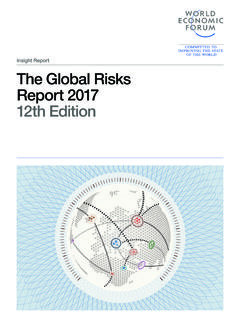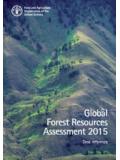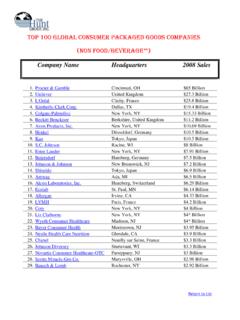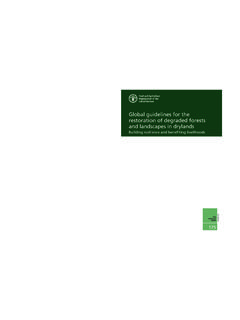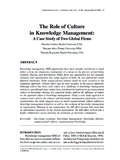Transcription of Global Health and Aging - World Health Organization
1 National Institute on AgingNational Institutes of Department of Health and Human ServicesGlobal Health and Aging2 Global Health and AgingPhoto credits front cover, left to right ( ): Djembe; Sergey Galushko; Laurin Rinder; Indianeye; Magomed Magomedagaev; and s Aging Living LongerNew Disease PatternsLonger Lives and DisabilityNew Data on Aging and HealthAssessing the Cost of Aging and Health Care Health and Work Changing Role of the FamilySuggested Resources ContentsRose Maria Li1 2469 12 1618202225 4 Global Health and Aging5 Preface The World is facing a situation without precedent: We soon will have more older people than children and more people at extreme old age than ever before.
2 As both the proportion of older people and the length of life increase throughout the World , key questions arise. Will population Aging be accompanied by a longer period of good Health , a sustained sense of well-being, and extended periods of social engagement and productivity, or will it be associated with more illness, disability, and dependency? How will Aging affect Health care and social costs? Are these futures inevitable, or can we act to establish a physical and social infrastructure that might foster better Health and wellbeing in older age?
3 How will population Aging play out differently for low-income countries that will age faster than their counterparts have, but before they become industrialized and wealthy?This brief report attempts to address some of these questions. Above all, it emphasizes the central role that Health will play moving forward. A better understanding of the changing relationship between Health with age is crucial if we are to create a future that takes full advantage of the powerful resource inherent in older populations. To do so, nations must develop appropriate data systems and research capacity to monitor and understand these patterns and relationships, well-being.
4 And research needs to be better coordinated if we are to discover the most cost-effective ways to maintain healthful life styles and everyday functioning in countries at different stages of economic development and with varying resources. Global efforts are required to understand and existing knowledge about the prevention and treatment of heart disease, stroke, diabetes, and population Aging also requires building needed infrastructure and institutions as soon as possible. The longer we delay, the more costly and less effective the solutions are likely to be.
5 Population Aging is a powerful and transforming demographic force. We are only just beginning to comprehend its impacts at the national and Global levels. As we prepare for a new demographic reality, we hope this report raises awareness not only about the critical link between Global Health and Aging , but also about the importance of rigorous and coordinated research to close gaps in our knowledge and the need for action based on evidence-based policies. Richard Suzman, PhD Director, Division of Behavioral and Social Research National Institute on Aging National Institutes of Health1 John Beard, MBBS, PhDDirector, Department of Ageing and Life CourseWorld Health OrganizationPreface2 Global Health and AgingFigure 1.
6 Young Children and Older People as a Percentage of Global Population: 1950-2050 Source: United Nations. World Population Prospects: The 2010 Revision. Available at: The World is on the brink of a demographic milestone. Since the beginning of recorded history, young children have outnumbered the number of people aged 65 or older will outnumber children under age 5. Driven by falling fertility rates and remarkable increases in life expectancy, population Aging will continue, even accelerate (Figure 1).
7 The number of people aged 65 or older is projected to grow from an estimated 524 million in 2010 to nearly billion in 2050, with most of the increase in developing remarkable improvements in life expectancy over the past century were part of a shift in the leading causes of disease and death. At the dawn of the 20th century, the major Health threats were infectious and parasitic diseases that most often claimed the lives of infants and children. Currently, noncommunicable diseases that more commonly affect adults and older people impose the greatest burden on Global Health .
8 Chronic noncommunicable diseases such as ! changes in lifestyle and diet, as well as Aging . The potential economic and societal costs of noncommunicable diseases of this type rise sharply with age and have the ability to affect economic growth. A World Health Organization analysis in 23 low- and middle-income countries estimated the economic losses from three noncommunicable diseases (heart disease, 3stroke, and diabetes) in these countries would total US$83 billion between 2006 and 2015. Reducing severe disability from disease and Health conditions is one key to holding down Health and social costs.
9 The Health and economic burden of disability also can be reinforced or alleviated by environmental characteristics that can determine whether an older person can remain independent despite physical limitations. The longer people can remain mobile and care for themselves, the lower are the costs for long-term care to families and many adult and older-age Health problems were rooted in early life experiences and living conditions, ensuring good child In the meantime, generations of children and young adults who grew up in poverty and ill Health in developing countries will be entering old age in coming decades.
10 Potentially increasing the Health burden of older populations in those continuing declines in death rates among older people, the proportion aged 80 or older is rising quickly, and more people are living past 100. The limits to life expectancy and lifespan are not as obvious as once thought. And there is mounting evidence from cross-national data that with appropriate policies and programs people can remain healthy and independent well into old age and can continue to contribute to their communities and potential for an active, healthy old age is tempered by one of the most daunting and potentially costly consequences of ever-longer life expectancies.











